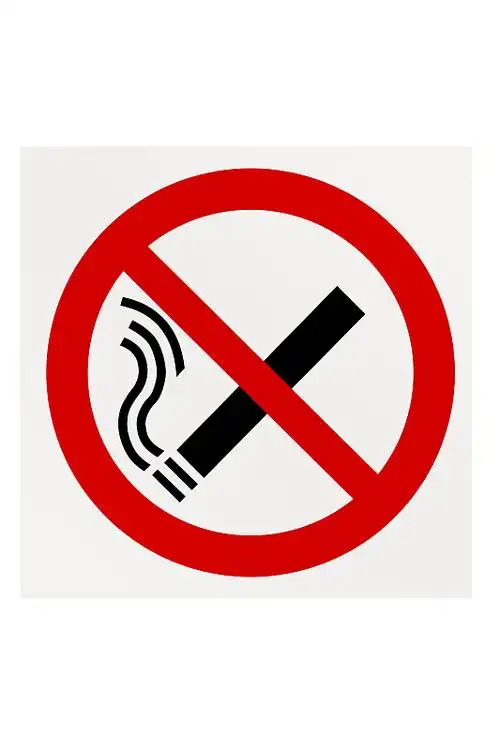The Unseen Burden: How Smoking Systematically Shrinks the Heart's Filling Capacity
We often picture the damage from smoking in our minds as blackened lungs or the looming threat of cancer. These are, without a doubt, devastating consequences. However, there is a more subtle, yet equally critical, form of damage occurring deep within your chest, one that directly impacts the very engine of life: your heart. This isn't just about heart attacks or arterial disease; it's about how smoking fundamentally alters the heart's mechanics, specifically its ability to fill with blood. A growing body of compelling clinical evidence points to a startling conclusion: smoking reduces the percentage of end-diastolic volume, a key indicator of cardiac health and efficiency.

To understand why this is so crucial, let's first demystify the term. The end-diastolic volume (EDV) is the amount of blood in the heart's main pumping chamber, the left ventricle, at the very end of its filling phase (diastole). Think of it as the heart taking a deep, preparatory breath before it contracts to send oxygen-rich blood to your entire body. The percentage we refer to is often tied to the ejection fraction, which is the proportion of that EDV that is pumped out with each heartbeat. When the EDV is compromised, the very foundation of an effective heartbeat is weakened. The link between smoking and impaired diastolic function is a critical pathway to understanding modern heart failure.
So, how does the simple act of inhaling cigarette smoke lead to this reduction in left ventricular filling capacity? The mechanisms are multifaceted and insidious, attacking the heart on several fronts.
Firstly, nicotine and carbon monoxide, the infamous twins in cigarette smoke, wage a direct war on your blood vessels and the heart muscle itself. Nicotine is a potent stimulant. It causes your heart rate to spike and your blood vessels to constrict. This vasoconstriction forces your heart to work much harder to push blood through narrowed passageways. Over time, this increased workload can lead to myocardial stiffness from smoking, a condition where the heart muscle thickens and becomes less pliable, much like a overworked rubber band that has lost its elasticity. A stiffer heart is a poor filler; it cannot relax fully to accommodate the necessary volume of blood, directly leading to a lower EDV.
Simultaneously, carbon monoxide aggressively binds to hemoglobin in your red blood cells, displacing life-sustaining oxygen. This creates a state of functional anemia, where your blood is less efficient at delivering oxygen to tissues, including the heart muscle. A heart starved of oxygen is a heart that struggles to perform its basic metabolic functions, including the energy-dependent process of relaxation during diastole. This impact of cigarette toxins on ventricular relaxation is a primary driver of diastolic dysfunction.
Beyond the direct chemical assault, smoking creates a state of chronic, low-grade inflammation throughout the entire cardiovascular system. This inflammation releases a cascade of chemicals that can damage the delicate cells of the blood vessels and the heart. It also accelerates the process of atherosclerosis, the buildup of fatty plaques in the arteries. While coronary artery blockages are a well-known cause of heart attacks, they also contribute to chronic smoking effects on cardiac output by impairing blood flow to the heart muscle, further compromising its ability to relax and fill properly.
The consequences of this diminished filling capacity are profound and far-reaching. When the end-diastolic volume is reduced, the heart has less blood to eject with each beat. To maintain an adequate blood supply to the brain, kidneys, and muscles, the body must compensate. The heart rate may increase, and the heart muscle may undergo remodeling, becoming thicker in an attempt to generate more force. This is a precarious state. This is the early, often silent, stage of what is known as heart failure with preserved ejection fraction (HFpEF). In HFpEF, the heart pumps out a seemingly normal percentage of blood (e.g., 50-60%), but it does so from a significantly smaller pre-load pool because the EDV is low. The patient experiences shortness of breath, fatigue, and exercise intolerance—not because the pump is weak, but because the tank isn't filling up.
The risk of developing diastolic heart failure from long-term smoking is significantly elevated. Smokers may find they get winded climbing a flight of stairs that never used to be a problem. They may attribute this to "being out of shape" or aging, when in reality, it is a direct consequence of reduced preload from smoking. Their cardiac reserve—the heart's ability to ramp up output during physical activity—is severely limited because the foundational filling volume is already compromised at rest.
Perhaps the most alarming aspect is that these changes can begin long before any noticeable symptoms appear. Advanced imaging techniques like echocardiograms can detect subtle changes in EDV percentage in smokers compared to non-smokers, even in individuals who feel perfectly healthy. This underscores the concept that smoking is a continuous, cumulative injury, not a single event.
Now, for the most critical question: is this damage permanent? The good news, supported by a wealth of evidence, is that the human body possesses a remarkable capacity for healing. The benefits of quitting smoking for heart function begin almost immediately.
Within just 20 minutes of your last cigarette, your heart rate and blood pressure begin to drop. Within 12 hours, carbon monoxide levels in your blood normalize, allowing for improved oxygen delivery. Over the following weeks and months, the inflammatory state begins to recede, and the nervous system's grip on blood vessel constriction loosens.
Studies focusing on cardiac chamber size after smoking cessation have shown encouraging results. The chronic stress on the heart is alleviated, allowing for improved ventricular relaxation. While severely stiffened myocardium may not fully revert to its original supple state, the functional improvement can be dramatic. The reversal of smoking-induced diastolic dysfunction is a realistic goal, leading to a tangible increase in exercise capacity and quality of life. The heart, no longer under constant chemical attack, can begin to restore its natural filling rhythm, gradually improving that all-important end-diastolic volume.
In conclusion, the narrative that smoking only harms the lungs is dangerously incomplete. The habit inflicts a precise and measurable injury on the heart's fundamental mechanics, primarily by reducing the percentage of end-diastolic volume. This process, driven by toxins, inflammation, and oxygen deprivation, sets the stage for a specific type of heart failure that is characterized by fatigue and breathlessness. Understanding this link—between smoking and impaired diastolic function—is crucial for recognizing the full spectrum of cardiovascular risk. However, this story also carries a powerful message of hope. The decision to quit smoking is the single most effective step one can take to halt this process and embark on a path of cardiac repair, allowing the heart to once again fill completely, and power life to its fullest potential.













